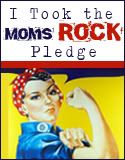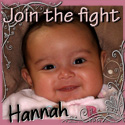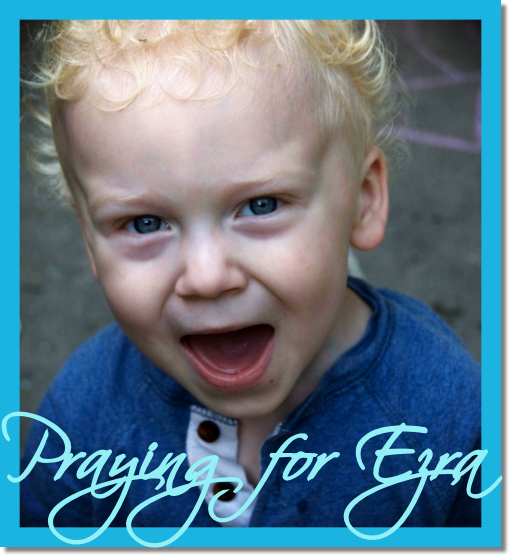Tribute Tuesday is debuting here today. I had originally started this on my Yummy! Yummy! Yummy! blog but decided that, since charities are generally involved with a health issue, it would be best suited here. Enjoy!
Tribute Tuesday: Charity Begins With You -
It's about AWARENESS
Tribute Tuesday is to honor charities, charitable groups and those who go above and beyond for their charities.
The Empty Cup Runneth Over - Cindy Papale
After being diagnosed in July, 2000 with a stage I, left, multi-focal, invasive breast cancer, rather than have a pity party I would turn something so negative and life threatening as breast cancer into a positive. October is breast cancer month, which is the month not only everyone is made aware about the disease, but for some survivors, including my self it can be overwhelming. The possibility of whether my breast cancer could return is enough to frighten anyone. Even though I worked for a breast surgeon at the University of Miami for 11 years, I still went on to web sites to look up the type of cancer I had once diagnosed. I wondered whether I was doing the right thing because sometimes information on web sites either can be incorrect or obsolete. When I began to look up my type of cancer, I realized I was reading more than I wanted to know.
It was very difficult for me to say the words breast cancer to anyone. The word cancer alone was even more frightening. Unless one hears those words from a physician that “your biopsy is positive for breast cancer,” it is difficult for anyone to understand how they would react.
Approximately one year later I was invited as a guest speaker in Psychology classes at the University of Miami where I shared with many students my breast cancer experiences. There have been many times when I lectured that I had to hold back my tears. Just remembering all I had gone through was very emotional for me. However, I knew that I needed to be strong because I wanted very much to help educate other young women and men about breast cancer.
As I began to speak, I noticed the interest in their faces and I realized they truly were interested in learning about breast cancer. I explained to them that self breast examination, awareness and early detection of breast cancer was critical for early diagnosis and cure. I encouraged them to be proactive, and if they felt something was wrong with their body to tell someone.
Soon after I spoke in psychology classes at the University of Miami, my husband at the time asked if I would speak in his psychology high school class (11th and 12th graders). I thought about it for sometime before I agreed. Most teenagers seem to think that nothing bad can happen to them, as I did at that age. I was not sure they would really be interested because I thought they would find it difficult to relate to the experience.
On the day of my talk I was extremely nervous. I wondered whether they would like me or even care about the subject of breast cancer. As I began speaking to the students I was thrilled how they opened up to me, which inspired me to continue speaking for the entire hour. I shared everything with them from how it felt to have a mammogram, to having a biopsy procedure, and the removal of my breast.
After my lecture I remember one young girl approached me and asked all kinds of questions, which she was embarrassed to ask in front of the other students. She also mentioned she could not even speak with her own mother about breast cancer. I was not surprised because I remember myself as a teenager never talking to my own mother. I was embarrassed and would rather speak with my friends never realizing they, too, knew just as much as I did about breast cancer, which was nothing.
When I finished speaking I realized how little these students knew about breast cancer, I decided to make the commitment to developing and communicating understandable and accurate information in a book (which I did titled The Empty Cup Runneth Over, published by Dorrance Publishing Company) to better help educate high school and college women and men about breast cancer.
After more than six years of lecturing, I have found that students had many questions about what it feels like to have a mammogram, how are biopsies performed and does it hurt, how it feels when one is first diagnosed, what it feels like to have no breasts, how did I finally make the decision to have breast reconstruction, and most importantly, how to examine their own breasts.
In many of the chapters in The Empty Cup Runneth Over, I navigate my story and share the interviews with several University of Miami cancer specialists who have contributed chapters in my book. There are other survivor stories and a nutrition chapter with delicious, healthy recipes that I personally have tried.
The Empty Cup Runneth Over (www.theemptycuprunnethover.com) is written in a dialogue that is easy and even humorous in many chapters. We feel it is important to begin educating high school and college students before they have to deal with breast cancer or other heath issues, either with a family member, or a friend. We know you will find it informative, but more so, hope it will inspire you to get to know and take care of your body. For a personal signed copy of The Empty Cup Runneth Over the University of Miami college campus book store in Coral Gables, Florida would be happy to contact me. The number to call is (305) 284-4101 and ask for Randi, and my book also is on AMAZON.
A portion of the proceeds from The Empty Cup Runneth Over will go towards The Kristy Lasch Miracle Foundation. Kristy was diagnosed with breast cancer at 22 and lost her battle at age 26. Her dream was to create a foundation for women under 30 to help with medical-related expenses. Before Kristy passed away she began writing a journal. Her parents, Tom and Lynn Lasch found her journal and permitted me to share her story in my book The Empty Cup Runneth Over. I am also honored to be Board Member to the Foundation. For more information about Kristy please go to www.kristylasch.org
Cindy can be found:
Website: www.theemptycuprunnethover.com
Twitter: @CindyPapale
Facebook: Cindy Papale
Tuesday, August 18, 2009
Tribute Tuesday
Posted by Lagean Ellis at Tuesday, August 18, 2009 0 comments
Labels: Awareness, Breast, Cancer, Charity, cure, health, Tribute, Women
Chinese Herb May Ease Rheumatoid Arthritis
‘Thunder God Vine’ May Work as Natural Treatment for Rheumatoid Arthritis Symptoms
A Chinese herbal remedy may help ease symptoms in people with rheumatoid arthritis.
A new study shows that the Chinese herbal remedy Tripterygium wilfordii Hook F (TwHF), also known as “lei gong teng” or "thunder god vine," helped decrease joint tenderness and pain in a small group of people treated with the medicinal plant.
Those who took an extract of the herb's roots experienced greater improvement in rheumatoid arthritis symptoms than those who took the anti-inflammatory drug sulfasalazine.
Rheumatoid arthritis is a chronic inflammatory disease that causes pain and swelling of the joints. Rheumatoid arthritis also leads to joint damage and destruction. There is no cure for the condition, and currently available treatments are designed to ease the symptoms and disability caused by the disease.
Although recent advancements in rheumatoid arthritis treatment have led to a greater number of available therapies, many of those therapies come with side effects that prompt some users to discontinue treatment or seek complementary and alternative treatments.
Thunder God Vine for RA
Researchers say thunder god vine has been used in China for centuries to treat a variety of inflammatory diseases, and some small clinical trials have suggested that the Chinese herbal remedy may benefit people with rheumatoid arthritis.
This study, published in the Annals of Internal Medicine, compared the benefits and side effects of treatment with thunder god vine and a conventional anti-inflammatory drug used in rheumatoid arthritis. Researchers randomly assigned 121 people with rheumatoid arthritis to take the 60 milligrams of the Chinese herbal extract three times a day or 1 gram of the anti-inflammatory drug sulfasalazine twice a day for 24 weeks.
Nearly half of the participants dropped out before the study was complete. But after 24 weeks of treatment, researchers found that a greater proportion of people in the Chinese herbal remedy group experienced at least 20% improvement on a standard measure of rheumatoid arthritis symptoms than the other group.
Researcher Raphaela Goldbach-Mansky, MD, MHS, of the National Institutes of Health, and colleagues say the study was too short to show if thunder god vine also helped to slow the progression of joint destruction from rheumatoid arthritis. But if further studies confirm these results in larger numbers of people, thunder god vine may provide an affordable natural treatment option for rheumatoid arthritis.
Posted by Lagean Ellis at Tuesday, August 18, 2009 0 comments
Wednesday, August 12, 2009
New Osteoporosis Drug Coming?
2 Positive Studies Published on Experimental Drug Denosumab; FDA Panel Review This Week
The experimental drug denosumab may be on its way to becoming the newest way to treat osteoporosis.
Denosumab, a biological drug given by injection every six months, looks safe and effective, researchers report in today's advance online edition of the New England Journal of Medicine.
An FDA advisory panel will meet Aug. 13 to decide whether to recommend denosumab for FDA approval. The FDA often follows the advice of its advisory committees, but it doesn't have to.
Denosumab Studies
Denosumab works differently than other osteoporosis drugs. It binds to a protein called RANKL, which cells called osteoclasts need to break down bone as part of the bone remodeling process.
The idea behind denosumab is to slow the bone-breakdown process in people whose bones are already dangerously thin.
WebMD first reported on denosumab in September 2008, when news about the drug's potential to treat osteoporosis in postmenopausal women was presented at the annual meeting of the American Society for Bone and Mineral Research in Montreal.
Now, that trial's results have been published, along with a separate study in men with prostate cancer taking bone-weakening hormone therapy to treat their cancer.
In both studies, patients got a shot of either denosumab or a placebo every six months for three years. And in both studies, fractures were rarer in patients taking denosumab.
In the postmenopausal osteoporosis study, which included 7,800 women 60-90 years old with osteoporosis, new vertebral fractures occurred in 2.3% of patients taking denosumab, compared with 7.2% of patients taking the placebo.
That's a difference of 68%, notes researcher Steven Cummings, MD, director of the San Francisco Coordinating Center at the California Pacific Medical Center and a professor of medicine and epidemiology at the University of California at San Francisco.
"It's more effective for reducing vertebral fractures than I expected ... 68% is a very powerful reduction," Cummings tells WebMD.
In the prostate cancer study, which included more than 1,400 men with prostate cancer on bone-weakening hormone therapy, new vertebral fractures occurred in 1.5% of patients taking denosumab, compared with 3.9% of patients who got the placebo.
"To see this very dramatic 62% decrease in vertebral fractures in three years in this relatively high-risk population of men is very impressive," researcher Matthew Smith, MD, PhD, tells WebMD. Smith is the director of genitourinary medical oncology at Massachusetts General Hospital Cancer Center.
Denosumab's Side Effects
Denosumab didn't show an increased risk of infection or cancer -- risks seen with other types of biologic drugs -- in either trial.
Denosumab also wasn't linked to osteonecrosis of the jaw (sometimes called "jawbone death"), which has been reported with other osteoporosis drugs called bisphosphonates.
But eczema and severe cases of a skin infection called cellulitis were more common in women taking denosumab in Cummings' study. The reason for that isn't clear.
Denosumab's safety profile "appeared excellent" in the prostate cancer study, Smith says, adding that the study was the first large study of fracture prevention in men.
"Previously, there had been no large studies to address that problem in men with prostate cancer, and frankly, not in men in any setting," Smith says.
Both denosumab studies were sponsored by the drug's maker, Amgen. Smith and Cummings disclose working as consultants for Amgen, and several researchers on both studies are Amgen employees.
Other Opinions
Denosumab "seems at least as efficacious as the currently approved alternatives," states an editorial published with the studies.
But editorialist Sundeep Khosla, MD, of the Mayo Clinic's medical school in Rochester, Minn., notes that there haven't been any head-to-head trials comparing denosumab to other osteoporosis drugs for fracture prevention, that the drug's longer-term safety isn't known yet, and that cost could be an issue if denosumab is pricey. Khosla notes no conflicts of interest.
Cummings says there are plans to follow the patients in his study for at least 10 years. He also hopes that patients will be more compliant about taking denosumab than other osteoporosis drugs.
"It's as effective as any other treatment and can be given twice a year as a simple injection, like a flu shot" and can be given by a nurse or primary care doctor, Cummings says.
Susan Bukata, MD, an osteoporosis specialist and associate professor of orthopaedics at New York's University of Rochester Medical Center, says denosumab would be "another option" for people who can't or won't take other osteoporosis drugs, such as people with kidney failure or gastrointestinal issues.
"There's definitely a place for this drug," Bukata says. "I think still, the gold standard is we start on the pills, we start on the generics. But this is certainly a good second-line choice and for some patients ... this may be my first-line choice."
Bukata wasn't involved in the denosumab trials. She discloses that she expects to soon work on a clinical trial of another Amgen drug.
Posted by Lagean Ellis at Wednesday, August 12, 2009 8 comments
Saturday, August 1, 2009
The Worst Place to Encounter a Cranky Baby - Baby Orajel Survey and Giveaway
****This contest is closed. Thanks to you all for entering.****
Baby Orajel study finds that 56 percent of Americans least like to encounter a cranky baby in a movie theater.
As the summer blockbuster season continues, parents of infants should be aware that they’re likely to face a frustrated audience if their child fusses during the movie.
The maker of Baby Orajel® teething pain medicine recently conducted a survey* to find out where Americans least like to encounter a cranky, crying baby. The results include the following:
• More than 56 percent of Americans claim that the worst place to encounter a cranky baby is at a movie theater. Other places where people hate to encounter a cranky baby are (in order): on an airplane (22 percent), at a church or religious function (12 percent) and at a restaurant (10 percent).
• Surprisingly, parents are more likely than non-parents (61 percent vs. 52 percent) to place movie theaters at the top of their list of bad places to encounter a cranky baby.
• While you may not think it when sitting next to one, crying babies aren’t nearly as annoying as other loud noises you may encounter during the day. The survey showed that the most frustrating sounds to hear (in order) are: a car alarm (39 percent), jackhammer (28 percent), baby crying (21 percent) and a barking dog (13 percent).
• Parents, who are more accustomed to the sound of cranky infants, are less likely than those without children to get annoyed by the sound of a crying baby. Specifically, 25 percent of non-parents named a baby crying as the most frustrating sound to hear, while only 15 percent of parents stated that in the survey.
* The survey was conducted by Kelton Research between May 20 and 27, 2009 and included 1004 participants.
The Giveaway:
One reader will win an assortment of Baby Orajel items – Cooling Cucumber Teething Gel and Tooth & Gum Cleanser. We all know what a life saver the teething gel can be. We also know how important it is to get started with good, healthy teeth and gums and brushing habits at an early age.
To be eligible for the giveaway, you must make sure that I can contact you when you when. Either by being a blogger or by leaving your e-mail address in your comment.
Contest will end Tuesday, August 11th at 11:59 CST.
Main Entries: Must be completed to be eligible for other entries.
Visit the Baby Orajel website and leave a comment telling me one of their 10 ways to make brushing fun.
Extra Entries:
(1) Enter the "Smile Package" giveaway, also brought to you by Danielle, and leave a comment saying you did so.
(2) Follow this blog.
(3) Follow me on twitter and tweet about the giveaway, include @SereneMoments so I can find you.
(3) Give me a suggestion for a topic to use here on my health blog.
Good luck to you all!
Posted by Lagean Ellis at Saturday, August 01, 2009 43 comments































